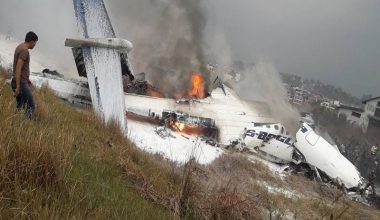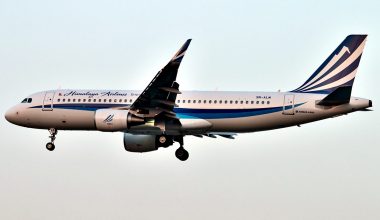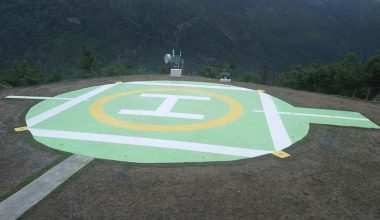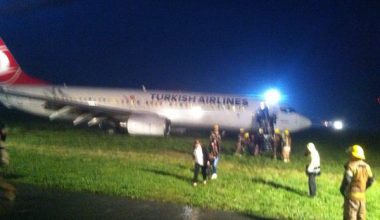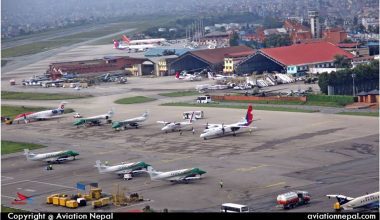Tribhuvan University (TU) has introduced a Bachelors in Aerospace Engineering from the new educational session 2075/76. With the motive to facilitate young aviation enthusiasts for achieving aerospace engineering degree, TU has finally included the course which will be running solely by its faculties. We had an opportunity to talk with the professors and conduct some Q&A session about the course. Following are some of the frequently asked questions by the students:
1. We have been hearing about the aeronautical engineering course to be introduced by Pulchowk campus. But now we have aerospace engineering. What is Aerospace Engineering and why did we choose it instead of Aeronautical Engineering?
Aerospace Engineering is an engineering discipline that is focused on the design, construction, testing and operation of airplanes and spacecraft. Aerospace engineers are also employed in related transportation industries such as automotive, shipbuilding and high-speed trains.
Aerospace Engineers have transformed society through modern air travel, developing state-of-the-art materials, design optimization and manufacturing schemes, and guidance, control and navigation systems that impact our everyday life well beyond the traditional aerospace applications. Aerospace engineers build more than just airplanes!
Aeronautical engineering is the original term for this field. In recent years aerospace engineering has come into the common use as it describes a broader term including the aircraft operating in outer space. We choose aerospace over aeronautics to expand our reach in much more wider space. More than 80% of world universities have adopted the term aerospace in replacing old traditional aeronautical term. This will pave a pathway for IOE to establish itself as a central hub of the nation for future space programs and also our graduates will have smooth transitions when applying to other universities for their further studies. Some of our courses like rocket propulsion, advanced space propulsion, compressible aerodynamics, radar communication are key electives which students can choose in their final year. Apart from this, one of our faculty members is currently pursuing his PhD. in “Characterization of Hypersonic Aerodynamic Surfaces”, who has already published his works on various topics such as “Shcramjet Combustor Characteristic Control Techniques”. Recently a group of students has also completed their undergraduate project with the topic of “Design and Analysis of Busemann Intake with Fuel Injection at Intake” under my supervision. Considering the fact that our mission and vision is for both present and future we choose to name aerospace engineering.
2. Are there any branches under Aerospace Engineering?
Aerospace engineering is divided into two branches: aeronautical engineering, which focuses on aircraft operating in the Earth’s atmosphere, and astronautical engineering focuses on spacecraft.
Aerospace engineering has many of the same underlying core disciplines as Mechanical Engineering, including mechanics, thermodynamics, materials science, design and structural analysis, along with an additional layer of knowledge specific to the aerospace discipline. Avionics engineering is also another branch which deals with the electronics side of aerospace engineering.
The programme starts off with a series of introductory courses. The freshmen year for all students within IOE will have similar courses with the introduction to the basic science with many familiar topics which they were taught in high school. From the very first day of their sophomore year, students will be able to dive into the specifics of aerospace engineering. While students are also taught the basic engineering sciences such as mechanics and calculus, the programme focus on how to apply these engineering disciplines to aerospace design problems as soon as possible.
A series of intensive mathematics courses within the first two years will provide students with the tools required to tackle the aerospace courses. The topics that were discussed in the first two years are now explored in-depth in junior year, providing students with a solid theoretical background in subjects such as Aircraft propulsion and Manufacturing process.
In the senior year, students will deepen knowledge in aerospace engineering within specialized areas, while getting the opportunity to take elective studies so that students can tailor the program to suit their area of interest and enhance career opportunities. In the final semester, students will put theory into practice through a major research project, in which they will plan a project, conduct a critical review of the relevant published material, complete the research project, evaluate information, and report their findings.
4. How much theory and practical will it include?
During the four year program in BE Aerospace Engineering, students will take 133 credit hours for Lectures, 38.5 credit hour for Tutorial and 78 credit hours of Practical and laboratory.
5. What is the total duration of this course and what are its core contents?
The undergraduate studies in engineering in Nepal can be completed in four years. The program structure and its detailed syllabus can be found on our IOE website.
6. How many students will be admitted in the first batch?
This year 48 students will be enrolled for B.E in Aerospace Engineering program in Pulchowk campus, Institute of engineering.
7. What will be the total cost? Is there any scholarship scheme?
Out of 48 students, 12 Nepalese students will have to pay Nrs. 64,988 as regular students for the entire 4 year course and the remaining 36 Nepalese students will have to pay Nrs. 6,00,000 including 40,000 refundable fees for full pay students for their undergraduate course. Regular and full fee students are categorized based on the ranking of the entrance exam conducted by IOE. For international students, the total cost for this course is Nrs.15,10,691.
8. What are labs and physical infrastructures available for students?
As mentioned earlier, students will have to develop a stronghold on basics of sciences in first year and basics of engineering in the second year before we go into the core of aerospace engineering. Students will get all the practical learning from basic science and engineering laboratories which is already available in the department of mechanical engineering. There are 10 laboratories for material science, thermodynamics, fluid machinery, control system and so on.
We will have an additional 9 laboratories including labs for advanced manufacturing, non-destructive testing, computer-aided engineering, propulsion, aerodynamics and so on. For aerodynamic testing and experiments, a wind tunnel has been already set up.
9. What is the difference between Aircraft Maintenance License (AML) course and aerospace engineering? On what basis one can choose between these two aviation courses?
Aerospace engineering is heavily based towards the design of a plane, its handling and many other properties related to its actual flight. Aerospace engineers design propulsion engines, they create structural component systems, improve crew and passenger accommodations, and invent better life support systems. Underpinning this, they develop the equipment used to build automotive, aircraft, marine and space vehicles. They rely heavily on higher mathematics, fluid dynamics, strength of materials and manufacturing processes.
On the other hand Aircraft Maintenance Engineering (AME) focuses on day to day maintenance on aircraft. They are more focused on understanding failures, working out maintenance schedules and methods and understanding predictive maintenance. An aircraft maintenance engineer may be responsible for changing tiers/refueling, clearing defects etc. Basic level of maths and physics is enough for this kind of job handling, an AME doesn’t need to know about complex mathematics related to fluid dynamics, acoustics, electromagnetism, thermodynamics etc.
10. What are the scopes of aerospace engineering especially in Nepal?
Aviation industry
Nepal is a growing county with high potential of tourism. With the increase in the number of international airports and an increasing number of commercial airlines, Aviation industry in Nepal will take a big share of our graduates. With the wide range of sub-disciplines within the aerospace industry, our students will have options to choose their expertise field with the stronghold on theoretical and practical aspects.
Research Industry
Apart from working in commercial airlines, students who want to do research will also get indispensable theoretical and experimental experience. Because of their unique backgrounds in aerodynamics, propulsion systems, vehicle dynamics and control, and structures, aerospace engineers are involved in solving some of society’s most pressing and complex problems and are highly sought after as systems engineers outside of the aerospace engineering industry. Aerospace engineers are pioneers on the forefront of technology. Our course is well organized taking an account of these factors.
11. What will students acquire till graduation?
When graduated, students will have the analytical, technological, and design skills required to practice aerospace engineering. Students will also learn to appreciate the wider social implications of the engineering profession. Designing complex systems for latest generation aircraft, satellite, or UAV requires the skills of multidisciplinary engineers and systems architects with the most advanced scientific training. They are prepared to contribute to new fields of research and to anticipate and shape the latest industrial and technological developments
12. What are the future aim and plans of the department to make the aerospace course successful and sustainable?
Now that IOE has introduced Aerospace engineering for the first time in Nepal, our next step is to develop aerospace-related research laboratories. These laboratories will be very different from the laboratories for students. Apart from preparing students for commercial and industrial challenges in aerospace engineering, this program aims to create entrepreneurial students who will start some aviation-related industries. Many countries have started working in small-scale aircraft rather than manufacturing large-scale commercial or military aircraft. As Iran has established itself as a powerhouse for UAV drones. As you know there are many industries in India that does CAE related works for Boeing and Airbus. We hope same sort of time will come for Nepal.
13. It has been said that the course will feature industrial exposure also. So, what preparation is the department making to provide industrial exposure to aerospace engineering students?
Department of Mechanical Engineering (DME) has been doing the necessary research and preparation for the introduction of Aerospace Engineering since early 2014. Since then detailed research on opportunities and challenges has been done before the introduction of aerospace engineering. DME has MOU with different universities for the development of the aerospace engineering. The most recent one is “1st TU-NUAA joint Academic Workshop” held in January 2018. We are also closely working with CAAN and other commercial airlines to sigh MOU and move forward for the betterment of aviation industry in Nepal. We have received many aircraft parts from NAC worth crores in rupees. This is one of the generous steps from NAC and shows their positive attitude towards this programme.
If you have any queries then please contact:

